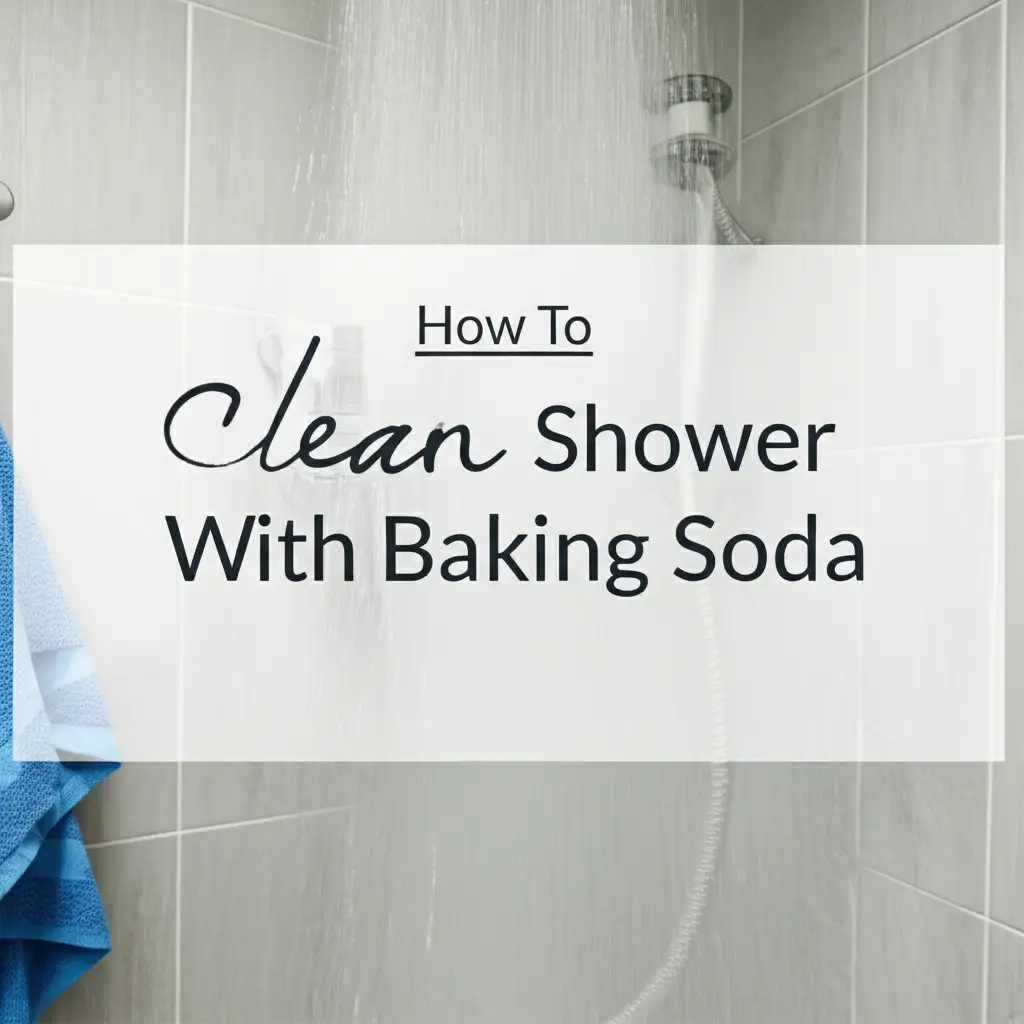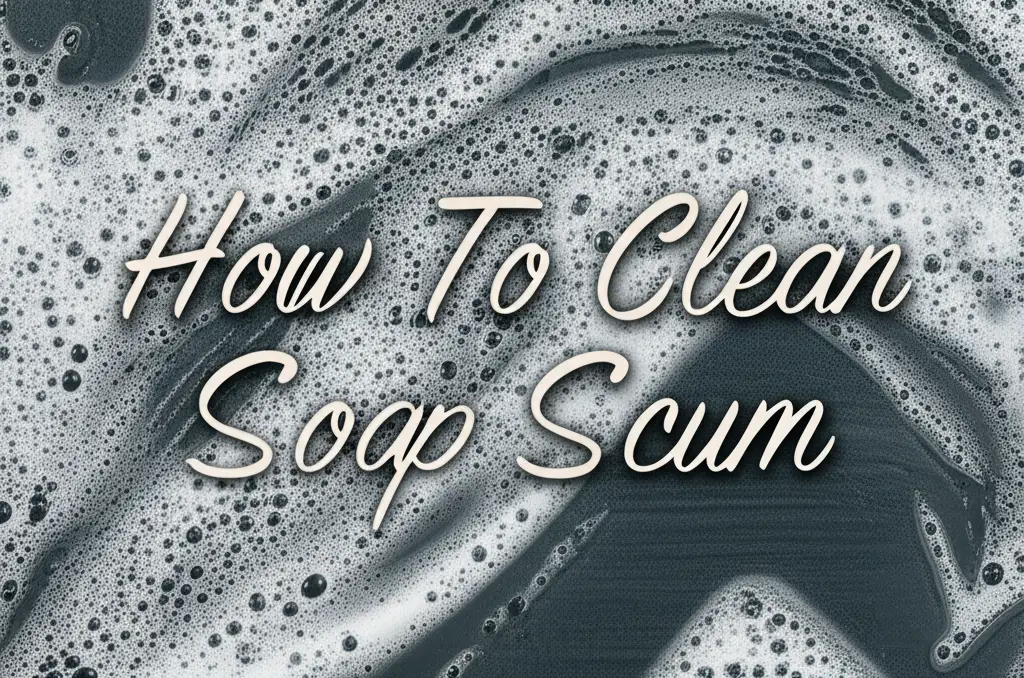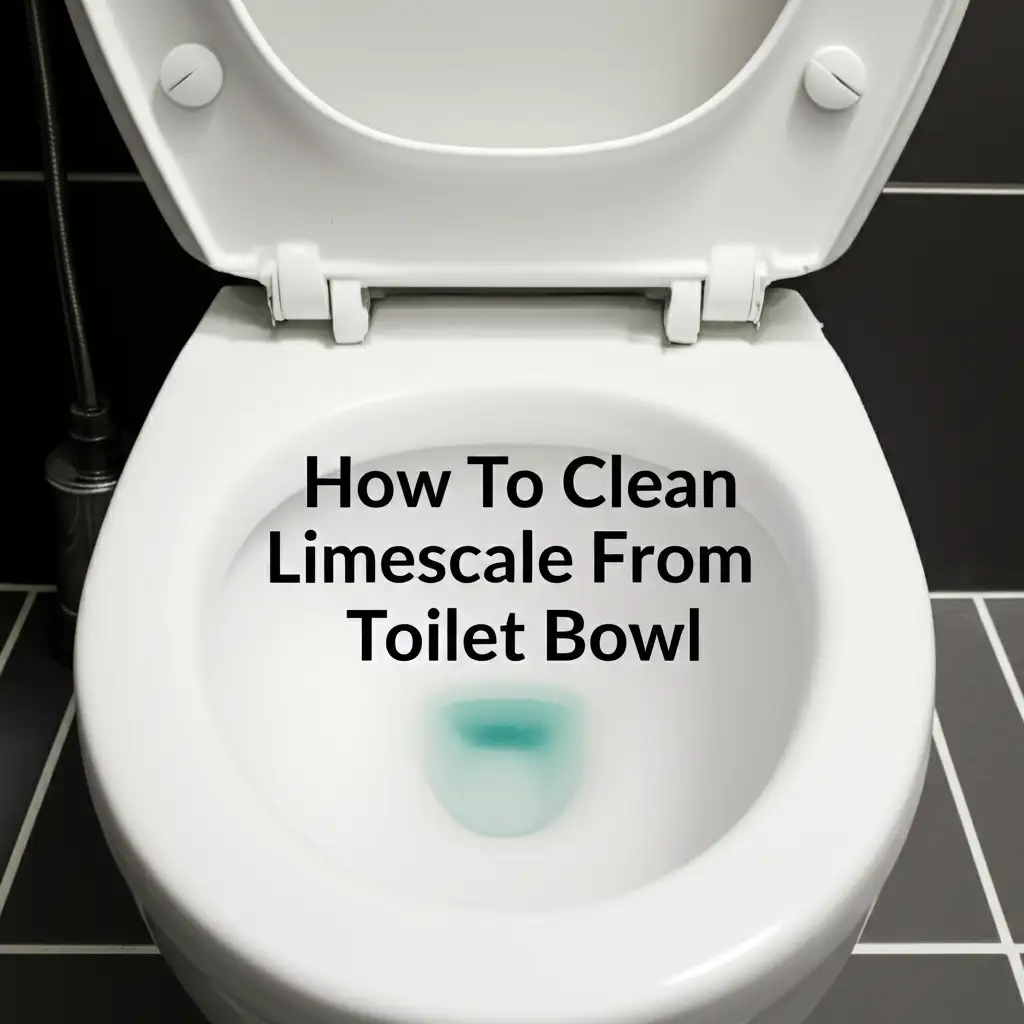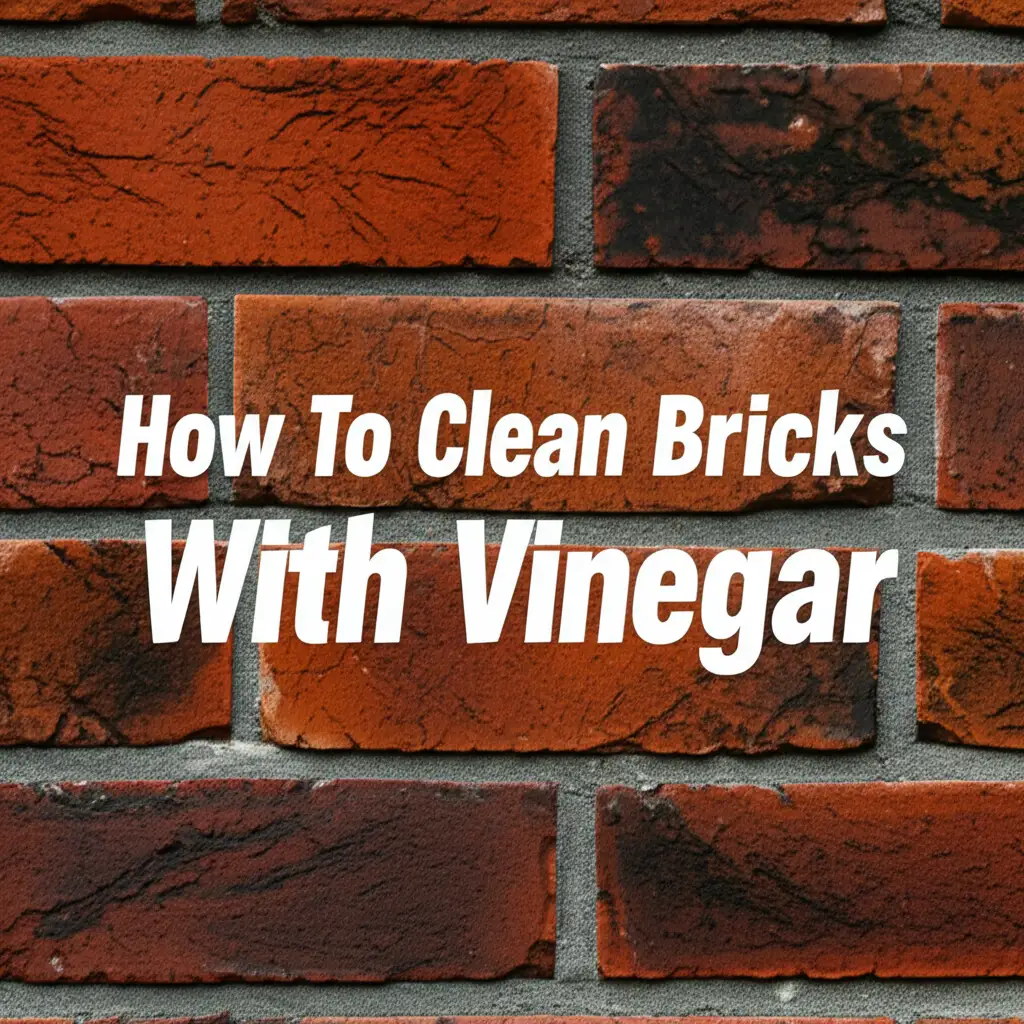· Home Cleaning · 14 min read
How To Clean Shower With Vinegar
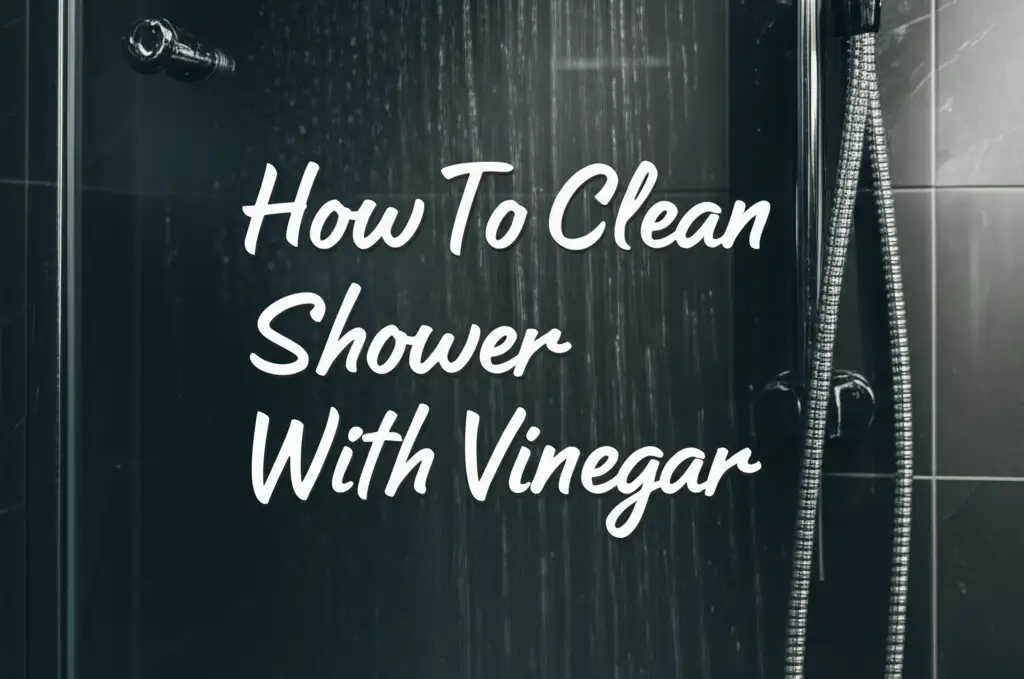
Clean Your Shower With Vinegar: A Natural Approach
Is your shower looking dull and covered in grime? You want a sparkling clean space without harsh chemicals. Many people wonder how to clean shower with vinegar effectively. I know the feeling; a clean shower makes a big difference in how your bathroom feels. Vinegar offers a powerful, natural, and budget-friendly solution for a truly clean shower. This article will show you exactly how to transform your shower using simple white vinegar. We will cover everything from gathering your supplies to tackling tough stains and maintaining a fresh shower.
Takeaway
- Use distilled white vinegar for effective, natural shower cleaning.
- Always dilute vinegar for painted or sensitive surfaces.
- Address different shower surfaces like tiles, glass, and fixtures separately.
- Combine vinegar with baking soda for extra cleaning power on tough stains.
- Regular maintenance prevents significant grime buildup.
Cleaning your shower with vinegar involves spraying a solution of equal parts white vinegar and water, letting it sit for 15-30 minutes, then scrubbing and rinsing. This method effectively removes soap scum, hard water stains, and some mildew. For tougher areas, use undiluted vinegar or a vinegar-baking soda paste.
Why Vinegar Is Your Go-To Shower Cleaner
Vinegar is more than just a kitchen staple. It serves as an excellent natural cleaner. Acetic acid is the active ingredient in vinegar. This acid breaks down common shower messes. It dissolves hard water deposits and soap scum effectively. Vinegar also helps to inhibit mold and mildew growth. Using vinegar for cleaning is a safe option for many surfaces. It also does not leave behind harmful chemical residues.
I prefer using white distilled vinegar for shower cleaning. It contains about 5% acetic acid. This concentration is strong enough for cleaning tasks. It is also gentle enough for most bathroom surfaces. Avoid using apple cider vinegar or other types. They can leave sticky residues or unwanted colors. Cleaning with vinegar is a simple and effective choice. It offers an eco-friendly alternative to commercial cleaners. It also costs much less than specialized products.
Gathering Your Essential Vinegar Cleaning Supplies
Before you begin to clean shower with vinegar, gather the right tools. Having everything ready makes the process smoother. You will need a few common household items. These supplies help you apply the vinegar safely and effectively. I always make sure I have these things on hand. This preparation saves time and effort during cleaning.
Here is a list of what you will need:
- White Distilled Vinegar: This is the main ingredient. Buy a large bottle for best value.
- Empty Spray Bottle: A spray bottle makes applying vinegar easy. Label it clearly.
- Microfiber Cloths or Sponges: These are good for scrubbing and wiping. They will not scratch surfaces.
- Stiff Bristle Brush (optional): This brush is helpful for grout lines. It works well on tough stains.
- Baking Soda (optional): Combine baking soda with vinegar for extra scrubbing power. It creates a powerful fizz.
- Bucket: Use a bucket for mixing solutions or rinsing cloths.
- Rubber Gloves: Protect your hands from vinegar and grime.
- Old Toothbrush: An old toothbrush reaches small crevices and grout lines.
- Squeegee: Use a squeegee for streak-free shower glass.
Make sure your spray bottle is clean before filling it. Use a dedicated cleaning bottle to avoid confusion. These simple tools ensure you are ready to tackle any shower mess.
Preparing Your Shower for a Vinegar Cleanse
Proper preparation is important before you clean shower with vinegar. This step ensures safety and maximizes cleaning effectiveness. I always take a few minutes to prepare the area. This prevents damage and makes the cleaning process easier. A well-prepped shower responds better to the vinegar solution.
Follow these steps to prepare your shower:
- Ventilate the Bathroom: Open windows or turn on the exhaust fan. Vinegar has a strong smell. Good ventilation helps disperse the odor.
- Remove Items: Take out all bottles, soaps, loofahs, and toys. This gives you clear access to all surfaces. Place them outside the shower.
- Rinse the Shower: Briefly rinse the entire shower with warm water. This removes loose dirt and debris. It also helps moisten dried-on soap scum. Warm water prepares surfaces for better cleaning.
- Protect Sensitive Surfaces: Vinegar is acidic. It can damage certain materials. Do not use vinegar on natural stone like marble or granite. It can etch the surface. If you have any concerns, test vinegar on a small, hidden area first. Always dilute vinegar for painted surfaces or chrome fixtures to be safe.
Taking these steps ensures you have a safe and effective cleaning session. Your shower will be ready for its vinegar treatment.
Step-by-Step Guide to Cleaning Different Shower Surfaces
Once your shower is prepped, it’s time to apply the vinegar. Different surfaces may require slightly different approaches. I will guide you through cleaning common shower areas. This section covers tiles, grout, glass doors, and fixtures. Remember, consistency helps achieve a deep clean.
Cleaning Shower Tiles and Walls
Shower tiles often accumulate soap scum and hard water stains. Vinegar cuts through these residues effectively. This method works for ceramic, porcelain, and fiberglass tiles.
- Create Your Solution: Mix equal parts white vinegar and warm water in a spray bottle. For tougher stains, use undiluted vinegar.
- Spray Generously: Spray the entire tiled surface. Ensure good coverage, especially on stained areas. Let the solution sit for at least 15-30 minutes. For heavy buildup, leave it for an hour.
- Scrub the Tiles: Use a microfiber cloth or sponge to scrub the tiles. Circular motions often work best. For stubborn spots, apply more vinegar and scrub with a stiff brush.
- Rinse Thoroughly: Rinse the tiles completely with warm water. Ensure all vinegar residue washes away.
- Dry Surfaces: Wipe the tiles dry with a clean, dry cloth. This prevents new water spots.
Tackling Grout Lines
Grout lines can be a challenge. They often harbor dirt, mold, and mildew. Vinegar is helpful here, especially when combined with baking soda. For more detailed information, read our guide on how to clean grout in shower.
- Make a Paste: Mix baking soda with a small amount of vinegar to create a thick paste. The paste should be like toothpaste.
- Apply the Paste: Apply the paste directly onto the grout lines. You can use an old toothbrush or your finger.
- Let it Sit: Let the paste sit on the grout for 10-15 minutes. The fizzing action helps loosen grime.
- Scrub the Grout: Use an old toothbrush or a grout brush to scrub the lines. Apply firm pressure.
- Rinse Clean: Rinse the grout thoroughly with water. Make sure all paste is gone.
- Dry: Wipe the grout lines dry.
You can also find more tips on cleaning both tiles and grout effectively by visiting our article on how to clean shower tiles and grout.
Cleaning Glass Shower Doors
Glass shower doors easily show hard water spots and soap scum. Vinegar is excellent for achieving streak-free results. If you have particularly tough hard water, check out our article on how to clean shower glass hard water for more tips.
- Spray the Glass: Spray undiluted white vinegar directly onto the glass doors. Make sure to cover the entire surface.
- Allow Dwell Time: Let the vinegar sit for at least 10-15 minutes. For heavy buildup, extend this to 30 minutes.
- Scrub (if needed): Use a non-abrasive sponge or microfiber cloth to gently scrub any stubborn spots.
- Squeegee or Wipe: Use a squeegee to remove the vinegar and water. Start from the top and work down. Overlap strokes slightly. Alternatively, wipe with a clean, dry microfiber cloth.
- Buff for Shine: Buff the glass with another dry microfiber cloth for a sparkling finish.
For more specific advice on shower doors, see our detailed guide on how to clean shower doors with vinegar.
Polishing Fixtures and Faucets
Shower fixtures and faucets can accumulate mineral deposits. Vinegar helps restore their shine.
- Soak a Cloth: Soak a microfiber cloth in undiluted white vinegar.
- Wrap Fixtures: Wrap the vinegar-soaked cloth around faucets and shower heads. Secure it with a rubber band if needed.
- Wait: Let it sit for 30 minutes to an hour. For heavy buildup, leave overnight.
- Remove and Scrub: Remove the cloth. Use an old toothbrush or soft brush to scrub away loosened deposits.
- Rinse and Dry: Rinse thoroughly with water. Wipe dry with a clean cloth to prevent new water spots.
If your shower head is particularly clogged, you might find specific instructions helpful in our article on how to clean shower head with vinegar.
Tackling Specific Shower Cleaning Challenges with Vinegar
Sometimes, your shower has more than just general grime. Hard water stains, stubborn soap scum, and even mold can be persistent problems. Vinegar is a powerful tool against these issues. I have used these methods successfully in my own home. They provide targeted solutions for a truly clean shower.
Removing Stubborn Hard Water Stains
Hard water leaves behind mineral deposits that look like white, chalky residue. Vinegar’s acidity dissolves these minerals.
- Apply Undiluted Vinegar: For tough stains, skip dilution. Spray undiluted white vinegar directly onto the hard water stains.
- Let it Penetrate: Allow the vinegar to sit on the stains for at least 30 minutes. For very heavy buildup, let it sit for a few hours or even overnight. Keep the surface wet by reapplying vinegar if it dries.
- Scrub Vigorously: Use a stiff brush or a non-scratch scrubbing pad. Scrub the stained areas with firm pressure. You should see the deposits start to break down.
- Rinse and Repeat: Rinse the area thoroughly with water. If some stains remain, repeat the process. Stubborn stains may require multiple treatments.
Eliminating Persistent Soap Scum
Soap scum forms from the reaction of soap with hard water minerals. It leaves a sticky, unsightly film. Vinegar works wonders on soap scum.
- Generous Application: Spray a generous amount of undiluted white vinegar over all areas with soap scum. Ensure the film is completely saturated.
- Soak Time: Let the vinegar soak for at least 20-30 minutes. The longer it sits, the more it dissolves the scum.
- Scrub with a Cloth/Sponge: Use a microfiber cloth or a soft sponge to wipe away the loosened soap scum. You might need to apply a bit of elbow grease.
- Rinse Well: Rinse the entire shower area with warm water until all traces of soap scum and vinegar are gone.
- Dry Surfaces: Dry the surfaces with a clean, dry cloth to reveal a sparkling, scum-free finish.
Addressing Mold and Mildew with Vinegar
Mold and mildew thrive in damp, warm shower environments. Vinegar has antifungal properties that can help. For comprehensive mold removal, refer to our guide on how to clean mold with vinegar.
- Spray Undiluted Vinegar: Fill a spray bottle with undiluted white vinegar. Spray it directly onto visible mold and mildew spots.
- Allow Contact Time: Let the vinegar sit for at least an hour. This allows the acetic acid to penetrate and kill the mold spores.
- Scrub the Area: Use a stiff brush or an old toothbrush to scrub the moldy areas. Apply pressure to remove the growth.
- Rinse and Ventilate: Rinse the area thoroughly with water. Ensure good ventilation to dry the area quickly. Mold thrives in moisture.
- Repeat as Needed: For very embedded mold, you might need to repeat this process several times. Regularly cleaning prevents new mold growth.
Remember that a combination of vinegar and baking soda can be very effective for many tough cleaning tasks. Learn more about their combined power in our article about how to clean with vinegar and baking soda. If you specifically want to use baking soda for your shower, we have a guide on how to clean shower with baking soda as well.
Maintaining a Sparkling Shower After Cleaning with Vinegar
Cleaning your shower with vinegar provides excellent results. The key to keeping it that way is regular maintenance. A few simple habits prevent grime from building up. I find that prevention is much easier than deep cleaning. These tips will help extend the life of your clean shower.
Here are some effective maintenance strategies:
- Daily Rinse Down: After each shower, quickly rinse the walls and floor with warm water. This washes away loose soap and hair. A quick rinse takes only seconds.
- Wipe Down After Use: Keep a squeegee or a microfiber cloth in the shower. Quickly wipe down glass doors and tiled walls after each shower. This removes water droplets before they dry and leave spots. This is especially helpful for preventing hard water stains.
- Weekly Vinegar Spray: Once a week, quickly spray your shower surfaces with a diluted vinegar solution (1:1 vinegar to water). Let it sit for 5-10 minutes. Then, rinse and wipe. This weekly treatment prevents soap scum and mildew from taking hold.
- Address Issues Promptly: If you notice a new spot of mold or a buildup of scum, tackle it right away. Small problems are easier to clean than large ones. A quick spot treatment can save you a full deep clean later.
- Ensure Good Ventilation: Always run the exhaust fan during and after showers. Keep the bathroom door open if possible. Good airflow helps dry out the shower. This greatly reduces mold and mildew growth.
- Consider a Shower Spray: You can make a daily shower spray. Mix one cup of white vinegar, one cup of water, and a few drops of dish soap in a spray bottle. Mist the shower surfaces daily after use. Do not rinse it off. This helps prevent buildup over time.
By adopting these simple habits, you can keep your shower consistently clean. You will enjoy a fresh and inviting space every day. Regular care reduces the need for intense scrubbing.
Frequently Asked Questions About Cleaning Your Shower with Vinegar
Many people have questions about using vinegar for cleaning. I will answer some common ones here. These answers will help you use vinegar safely and effectively. They address concerns about various aspects of vinegar cleaning.
Is vinegar safe for all shower surfaces?
Vinegar is safe for most common shower surfaces. This includes ceramic tile, porcelain, fiberglass, and glass. However, avoid using vinegar on natural stone. This includes marble, travertine, or granite. Vinegar’s acidity can etch or dull these surfaces over time. Always test vinegar on a small, hidden area first.
Can I mix vinegar with other cleaning products?
No, you should never mix vinegar with bleach. Mixing these creates chlorine gas. This gas is highly toxic and dangerous to inhale. Stick to using vinegar on its own or with natural agents like baking soda. Combining vinegar with baking soda is a safe and effective cleaning method.
How often should I clean my shower with vinegar?
The frequency depends on usage and water hardness. For a deep clean, once a month is often enough. For maintenance, a quick weekly spray and wipe with a diluted vinegar solution works well. Daily squeegeeing or wiping after each shower helps prevent buildup between cleanings.
Does vinegar kill mold and mildew in the shower?
Yes, vinegar can kill many types of mold and mildew. Its acetic acid helps break down and destroy mold spores. For best results, use undiluted white vinegar directly on moldy areas. Let it sit for at least an hour before scrubbing and rinsing. Regular application helps prevent regrowth.
Will vinegar leave a strong smell in my bathroom?
Vinegar does have a distinct smell. However, this odor dissipates quickly once the area dries. Ensuring good ventilation during and after cleaning helps a lot. The smell is temporary and preferable to lingering chemical fumes. Some people add a few drops of essential oil to their cleaning solution. This can help with the scent.
Can vinegar remove old, set-in stains?
Vinegar is effective on many set-in stains like hard water marks and soap scum. For very old or stubborn stains, you may need multiple applications. Let the vinegar soak for a longer period. Combining vinegar with baking soda can create an abrasive paste. This paste adds extra scrubbing power for tough spots.
Conclusion: Embrace the Power of Vinegar for a Pristine Shower
You now understand how to clean shower with vinegar effectively. This natural, affordable, and powerful cleaner can transform your bathroom. You can achieve a sparkling, fresh shower. We have covered everything from gathering your tools to tackling tough stains. You also learned how to maintain that shine. I hope you feel confident to try these methods in your own home.
Embrace vinegar as your go-to shower cleaner. It saves money and reduces exposure to harsh chemicals. Start today and enjoy a cleaner, healthier shower space. A clean shower makes your daily routine more pleasant. It is simple to achieve with white vinegar.
- vinegar cleaning
- shower cleaning
- natural cleaning
- hard water stains
- mildew removal
- eco-friendly

